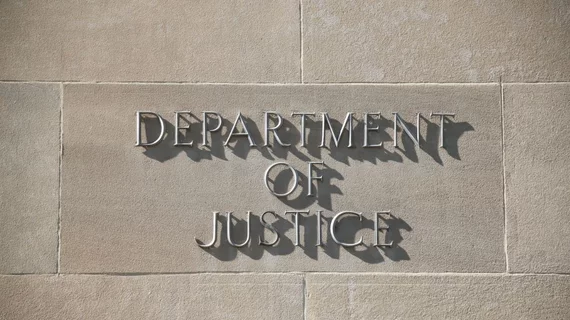A federal investigation into the potential overuse of primary prevention implantable cardioverter defibrillators (ICDs) appears to have made hospitals more judicious in their use of the devices, according to a study published July 3 in the Journal of the American Medical Association.
The U.S. Department of Justice (DOJ) notified hospitals of its investigation in 2010 and the probe was made public in January 2011. Around this time, the proportion of ICDs not meeting CMS’s National Coverage Determination (NCD) criteria declined significantly across all hospitals—but even more so at centers that eventually settled with the DOJ. The DOJ ultimately reached settlements with more than 500 hospitals for a combined $280 million.
“As a form of audit and feedback, the DOJ investigation appeared to be highly effective in changing practice,” Paul A. Heidenreich, MD, a professor of medicine at Stanford University, wrote in a related editorial. “Past studies of audit and feedback show relatively modest effects on changing physician behavior, although these studies did not involve allegations of fraud with financial penalties. Clearly, the reward or penalty attached to the feedback influences clinician behavior with penalties likely more effective in promoting change.”
The study included more than 300,000 ICDs implanted at 1,809 U.S. hospitals participating in a national cardiovascular registry. At the beginning of the study in 2007, 25.8 percent of ICDs implanted at settlement hospitals didn’t meet NCD criteria; 22.8 percent of ICDs at nonsettlement hospitals didn’t meet NCD criteria.
By the time the study ended in 2015, both groups of hospitals more than halved their utilization of ICDs not meeting NCD criteria. Settlement hospitals experienced a 16.1 percent absolute decrease in the proportion of “inappropriate” implants, while nonsettlement hospitals demonstrated a 12.1 percent absolute decrease. The sharpest annualized decreases were from January 2010 through July 2011—immediately after the DOJ investigation was announced.
Lead author Nihar R. Desai, MD, MPH, and colleagues also found procedural rates dropped among non-Medicare beneficiaries, even though they weren’t the target of the investigation.
“Despite substantial decreases in the proportion of primary prevention ICDs not meeting NCD criteria, there was persistent variation in performance at the hospital level with more than 14 percent of primary prevention ICDs not meeting NCD criteria at the worst-performing hospitals,” Desai et al. wrote. “Although this variation may represent opportunity for improvement, it may also reflect a gap between the NCD criteria and clinical practice. … The need for concordance between the NCD criteria, practice guidelines, and appropriate use criteria has been the subject of ongoing discussions and warrants additional study.”
Desai and coauthors also looked at whether secondary prevention ICDs—for individuals with a history of ventricular arrhythmia or cardiac arrest—declined over the study period. They concluded these procedures weren’t negatively impacted by the investigation.
“Observed changes in secondary prevention ICD volume preceded the announcement,” Desai et al. wrote. “These analyses offer some reassurance, but further research into hospital responses to the investigation could offer additional insights about possible unintended consequences.”
The authors acknowledged factors other than the investigation may have influenced practice patterns over the study period, and that some of the hospitals that didn’t settle with the DOJ were likely also investigated. In addition, they only had information on patients who were implanted with the devices, so they weren’t able to analyze whether the DOJ’s scrutiny was associated with patients who were clinically indicated for ICDs not receiving one.
In his editorial, Heidenreich predicted accusations of unnecessary care will only increase with the availability of more data and CMS’s growing reliance on appropriate use criteria.
“However, physicians and hospitals can lead (rather than be chased) by developing appropriate use criteria and participating in registries tracking appropriate care,” Heidenreich wrote.

